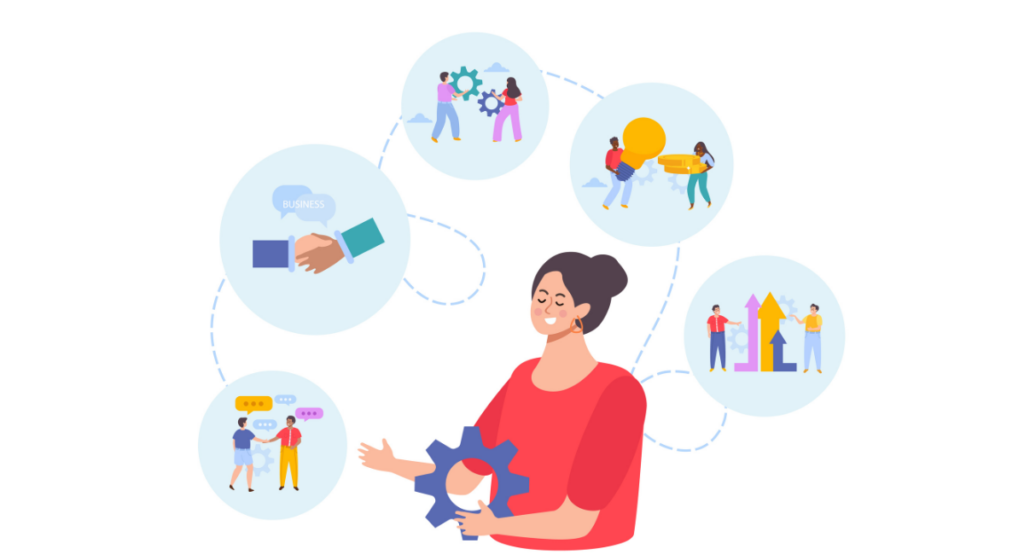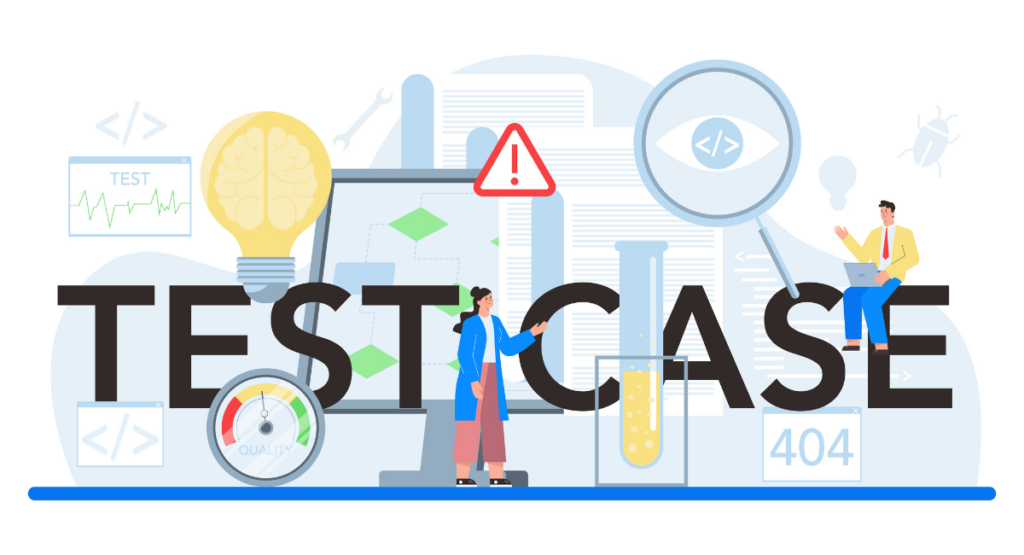As an attempt to make it more collaborative, Behavior-Driven Development is a software development process that strongly encourages developers or QA engineers and business participants to the software project.
It is referred to as a collaborative process that teams use to get a shared understanding of how the application should behave through conversation and concrete examples.
BDD is focused on getting a clear understanding of the wanted software behavior both through discussion and examples. The result is a far more focused, clean and uncluttered development process.
In turn, this prevents misconstruals and defects in the ultimate product. By imbibing BDD practices, teams strive to deliver software that is aligned better with business goals and the expectations of users.
Understanding BDD Testing

What is BDD Testing?
Behavior-driven development, or BDD, is the software development process that evolved from test-driven development. It encourages collaboration among developers, quality assurance testers, and non-technical or business participants in a software project.
The major objective of BDD is to make communication amongst all the stakeholders better through simplified, understandable descriptions of the features of the software.
This practice provides greater prominence to the behavioral specifications of computer software, relating to how the application should behave in a manner the user will experience.
Key Concepts of Behavior-Driven Development
In essence, BDD puts the business - or, better said, user-driven context for features into the foreground, and supports clarity by specifying desirable behavior through conversation and concrete examples. The key concepts are as follows:
- User Stories: These are short, simple descriptions of a feature from the perspective of a human who desires the new capability that is usually an end user or customer of the system.
- Acceptance Criteria: Special, agreed-about measures for describing a feature for it to be considered complete.
- Executable Specifications: These involve translating human-readable behavior descriptions into automated tests, ensuring alignment between written specs and the developed software.
Benefits of BDD Testing
Improved Collaboration between Teams
BDD promotes active participation of diverse stakeholders from the start of a project, bridging gaps between technical and non-technical team members.
By discussing behavior before development starts, misunderstandings are minimized, and everyone gains a clear understanding of the tasks ahead.
This inclusivity helps ensure that the product evolves precisely as needed, reducing late-stage revisions and accelerations in product timelines.
Enhanced Communication through Plain Language
One of the strongest advantages of BDD is its reliance on plain language to define requirements. This approach eliminates complex technical jargon, making the features and behaviors within the system understandable by all.
The shared language facilitates clearer communication and more effective feedback loops during the development cycle, enhancing both the process and the end product.
Increased Focus on User Behavior
Focusing on user behavior rather than technical specifications puts the spotlight on customer satisfaction and usability right from the early stages of development.
BDD assists in designing software that aligns closely with user expectations and demands, thereby improving the quality of the software product.
This focus helps teams to not only meet but excel in creating a user-friendly environment that resonates well with the end users' needs.
Best Practices for BDD Testing
Behavior-Driven Development (BDD) emphasizes collaboration among developers, QA teams, and non-technical stakeholders to ensure a shared understanding of what to build.
Following certain best practices can significantly enhance the results obtained from BDD testing.
Involving Stakeholders from the Beginning
Including stakeholders from the beginning helps align all parties on the desired outcomes of the application. BDD encourages constant communication to clarify requirements before proceeding with development.
This early collaboration includes gathering, discussing, and confirming expectations so that scenarios written for tests represent true business needs.
This approach minimizes the risks of misunderstandings and errors in the later stages of the project, ensuring that the software meets the set business objectives.
Writing Clear and Understandable Scenarios
Scenarios should be clearly written in an understandable language using the Given-When-Then format. This structure is instrumental in ensuring that everyone involved, from technical to non-technical participants, can understand and interact with the scenarios. Key points include:
- Given: Describes the initial context.
- When: Explains the event or action taken.
- Then: Details the expected outcome.
By adhering to this format, scenarios become replicable tests that accurately reflect user interactions and desired applications features.
Automating Tests for Efficiency
BDD is most efficient when automated. Automated testing allows for continuous integration and faster feedback loops. Tests should be integrated into the build process so that they are run frequently, catching issues early and reducing manual effort.
Automating these tests ensures consistency in execution and helps in managing larger suites of tests as the project evolves.
Implementing BDD Testing

Successfully implementing BDD in a development environment involves the use of specialized tools and following strategic steps to embed this methodology into existing processes.
Tools for BDD Testing
Common tools that facilitate BDD include Cucumber, SpecFlow, and Behave. These tools support the Given-When-Then syntax and integrate with various programming languages and continuous integration systems.
They animate the created scenarios into executable specs and help in maintaining the live documentation of the system.
Steps to Effective Implementation
Implementation of BDD begins with training teams on the BDD approach and the specific tools selected for use. Steps to implement BDD effectively include:
- Establish a clear scope and vision with stakeholders.
- Train development and QA teams on BDD concepts and tools.
- Start small with a pilot project to integrate BDR practices.
- Gradually expand BDD across projects based on learnings from the pilot.
This phased approach helps teams adjust and optimizes the BDD practices for larger-scale integration.
Overcoming Common Challenges
Organizations often face challenges like resistance to change, difficulty in defining clear behaviors, and maintaining updated documentation. Overcoming these challenges involves:
- Ensuring constant communication and educational support.
- Using workshops to help define clear and concise behavior scenarios.
- Involving experienced BDD practitioners during initial implementation.
Addressing these challenges head-on is crucial for successful BDD adoption and reaping its full benefits in software development projects.
Creating Effective Test Scenarios
Structuring Scenarios for Maximum Clarity
Clear and understandable BDD test scenarios are parameters to consider during the success of BDD testing. The scenarios should use good structure in explaining the intended functionality and user interactions.
Good structured scenario has titles used in summarizing the test, the narrative is put in context, and acceptance criteria give details that accredit to either pass or fail the test.
This will aid in better collaborative stakeholders who are not used to the particular technical jargon since the language used is relatively simple.
Incorporating Given-When-Then Statements
The Given-When-Then framework is fundamental in BDD testing. This format helps to articulate test scenarios in a logical, concise, and predictable manner.
"Given" sets up the initial context; "When" describes the specific action taken by the user; and "Then" outlines the expected outcome or change in state.
This clear separation helps in identifying pre-conditions, actions, and results, enabling testers and developers to focus on specific behaviors rather than technical details.
Ensuring Scalability and Reusability
To achieve scalability and reusability in BDD test scenarios, it’s important to design tests that can be extended and adapted over time without significant rewrites:
- Use abstract descriptions for scenarios to apply them to multiple use cases.
- Parameterize tests to run with different data inputs, enhancing test coverage with minimal adjustments.
- Leverage hooks and tags for setup and teardown processes, and to categorize scenarios for selective testing.
- Maintain a clear directory and naming convention to easily locate and modify scenarios as required.
By structuring tests with reuse and expansion in mind, teams can save time and resources while maintaining high software quality across future developments.
Book a Demo and experience ContextQA testing platform in action with a complimentary, no-obligation session tailored to your business needs.
Conclusion
Behavior-Driven Development testing is an approach that brings developers, testers, and non-technical stakeholders together through the definition of test scenarios in simple, domain-specific language.
BDD instead helps teams adopt the user's perspective; hence, software is developed that has a more intimate connection with business requirements and goals.
By embracing BDD in your software development process, you are well on your way to closer communication, fewer misunderstandings and a higher quality completed product.
As a driver for clearer specifications and discipline in testing, BDD enables teams to navigate the murkiest development cycles with greater certainty and speed. Change how your team develops and delivers - find BDD today.
Also Read - 10 API Testing Tips for Beginners (SOAP & REST)
